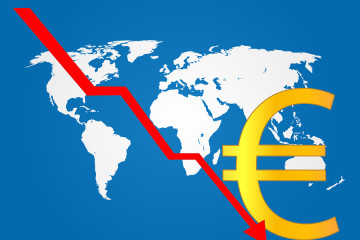The Entire World Has a Barbell Strategy and That’s Nuts: Gadfly

(Bloomberg Gadfly) —The investment universe seems to be going nuts. Everyone’s moving either into the safest assets, such as gold and Treasuries, or into the riskiest ones, like emerging-market debt and equities. Call it a mass barbell strategy. Or perhaps negative-rate schizophrenia.
Take gold. Long speculative positions reached the highest levels in at least a decade last month and have remained near that point ever since — the sort of situation one might see on the brink of global mayhem.
Emerging-market bond and stock funds, meanwhile, had a couple of record-breaking investment weeks this year and logged their longest streak of quarterly net inflows in at least five years.
Then there are Treasuries. Net speculative positions on federal funds are short, meaning hedge funds and other money managers are betting there will be a Fed rate hike in the not too distant future.
At the same time, the yield on 10-year Treasuries is holding near a record low touched earlier this year. That would usually signal portfolio managers don’t expect U.S. interest rates to move higher, or they fear some sort of catastrophe.
It’s no wonder that even seasoned strategists like Gluskin Sheff’s David Rosenberg are having a hard time making sense of the market.
One potential explanation is that a large number of heavyweight investors are simultaneously putting on the biggest barbell trade ever. That’s a common strategy among hedge funds, and involves combining super-high-risk assets with ultrasafe ones.
If that’s the case, then the danger is that everyone is adopting the same strategy, which cancels out any sort of safety net.
It’s also important to note that gold, Treasuries and emerging-market debt and equities have all been moving up in tandem. So what’s meant to be a hedged trade has become a directional one. Such strategies are great on the upside, but painful when they reverse course.
Another plausible explanation is simpler, but no less dangerous.
Perhaps with the Bank of Japan and the European Central Bank creating trillions of dollars of negative-yielding debt, assets that would have otherwise looked unattractive are taking on a new sheen.
Gold, for instance, is now being referred to as a high-yielding currency. The 1.5 percent offered by Treasuries looks handsome when compared to the negative 0.1 percent yield of German bunds or Japanese government bonds. Growth prospects in emerging markets, on the other hand, mean profits may be on the rise, making bonds and stocks in those nations more interesting.
10-year Japanese government bonds yield
-0.095%
Unusual behavior in an odd environment shouldn’t come as a surprise. As long as rates remain negative in large parts of the developed world, madness will be the norm.
This column does not necessarily reflect the opinion of Bloomberg LP and its owners.







No Comment